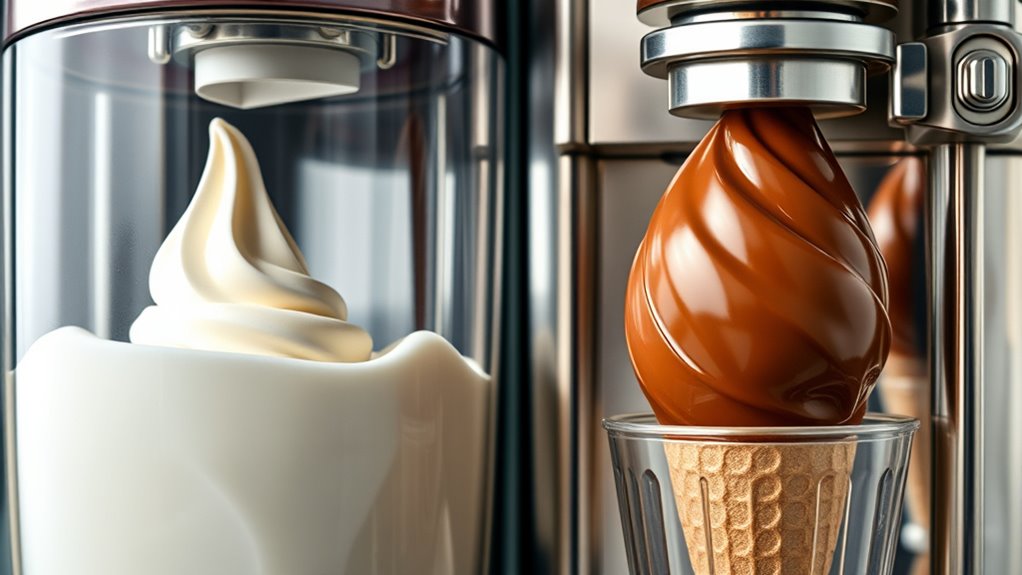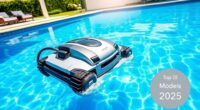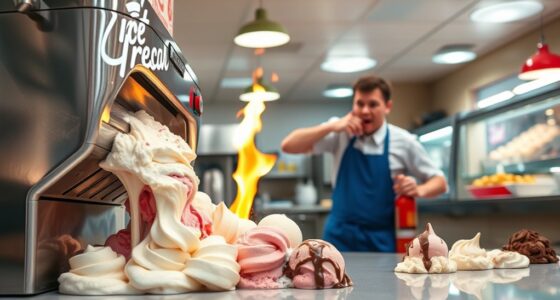If you want to maximize profits, pressurized soft serve machines are typically better since they produce servings faster and in higher volume, especially during busy times. They also cost more upfront but tend to have lower maintenance over time. Gravity-fed machines are simpler and may offer better flavor consistency, which helps with customer loyalty. Keep exploring what makes each system unique to find out which option can boost your store’s revenue even more.
Key Takeaways
- Pressurized machines support higher volume and faster service, boosting sales during peak times.
- Longer lifespan and lower maintenance costs of pressurized systems lead to better long-term profitability.
- Gravity-fed machines enhance flavor consistency, encouraging repeat business and customer loyalty.
- Upfront investment in pressurized equipment is higher, but operational savings increase overall revenue.
- Reliable performance and minimal downtime in pressurized systems improve customer experience and sales stability.
How Each System Affects Production Speed and Volume
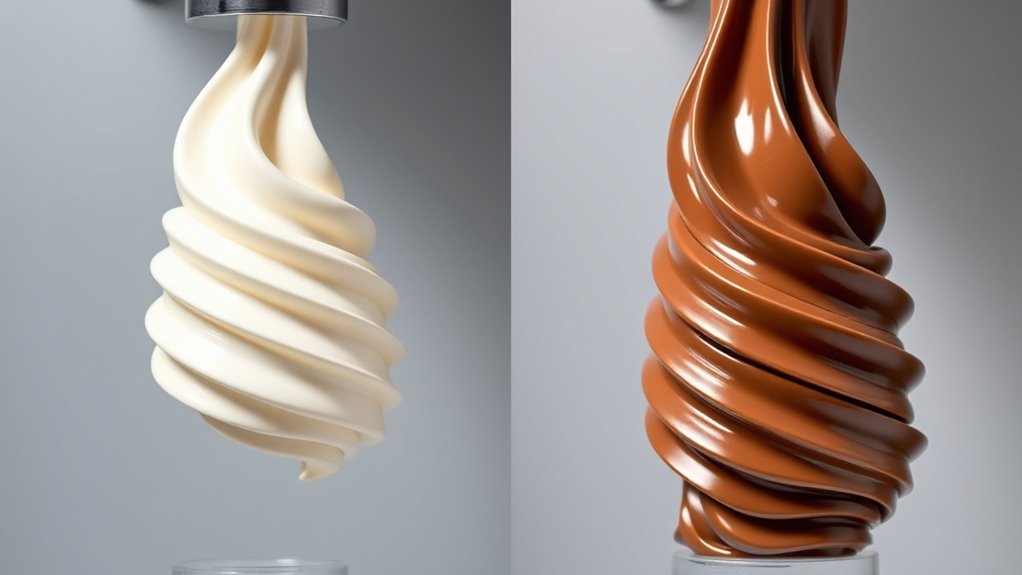
Gravity-fed and pressurized soft serve machines differ markedly in their production speed and volume. Gravity-fed machines typically produce soft serve at a slower rate, limiting the volume you can serve during busy times. They often require less equipment complexity, making them easier to operate but potentially less efficient for high-volume needs. Pressurized systems, on the other hand, deliver faster production speeds and higher volumes, ideal for busy venues. They also help maintain flavor consistency because the pressurized environment keeps the mixture uniform, reducing variability. However, their equipment complexity is higher, demanding more technical skill to operate and maintain. Overall, if you need quick, large servings, pressurized machines are advantageous, but if simplicity and steady flavor are priorities, gravity-fed systems may be better suited.
Cost and Maintenance Implications for Business Profitability
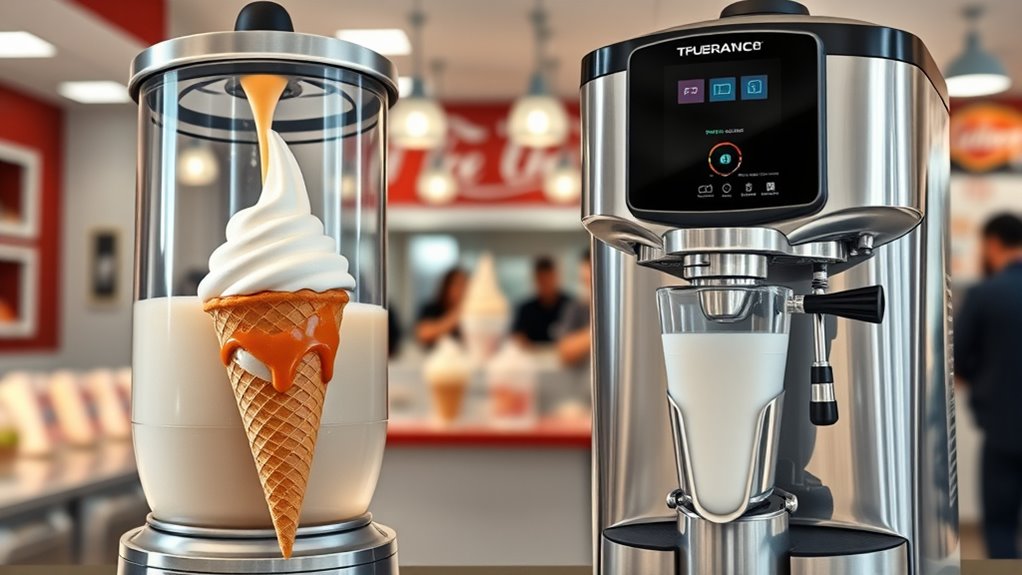
While pressurized soft serve machines often have higher upfront costs, they can lead to greater long-term savings through reduced downtime and consistent performance. In a thorough cost analysis, you’ll find that maintenance costs tend to be lower with pressurized systems because they require fewer repairs and adjustments over time. Additionally, pressurized models often feature advanced compression technology, which enhances durability and efficiency. When evaluating profitability, consider not just purchase price but also ongoing maintenance costs and operational reliability. Understanding narcissistic manipulation tactics used by some vendors can help in making more informed purchasing decisions. Investing in a pressurized model might seem costly initially, but the savings from fewer repairs and steady performance can markedly boost your bottom line over the long haul. Furthermore, technological innovations continue to improve the reliability and efficiency of pressurized systems, making them an increasingly attractive choice for business owners seeking profitability. Incorporating energy-saving features can also contribute to reduced operational expenses and improve overall profitability. Moreover, selecting the right system can also influence customer satisfaction, which is essential for repeat business and revenue growth.
Customer Experience and Satisfaction Differences
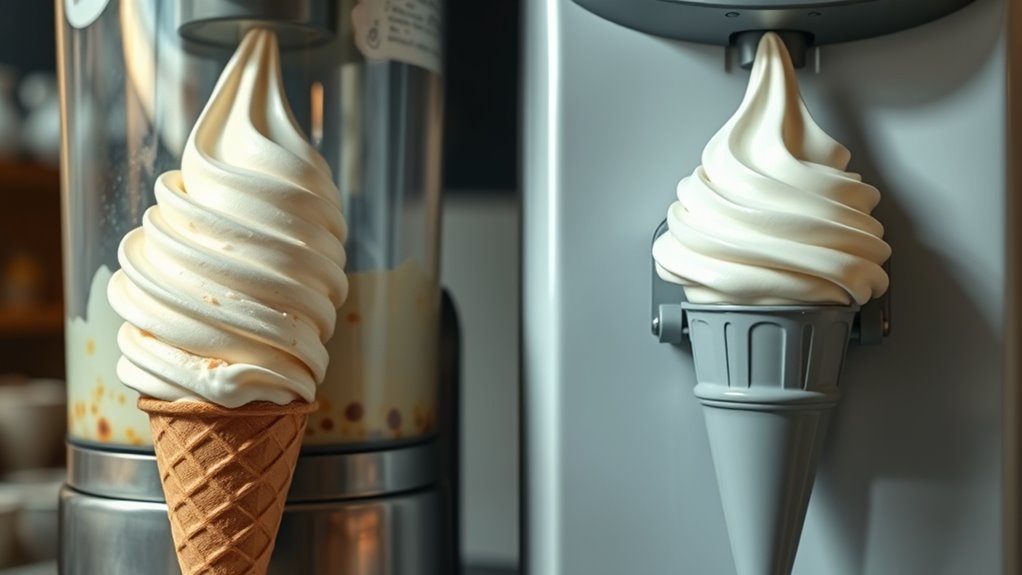
Choosing the right soft serve machine directly impacts your customers’ experience and satisfaction. With a gravity-fed machine, flavor consistency tends to be more reliable because it relies on natural gravity, reducing the chances of mix variations. Conversely, pressurized machines often require more precise staff training to maintain consistent texture and flavor, which can influence customer perception. Proper staff training guarantees that operators know how to calibrate and troubleshoot equipment, preventing issues like uneven servings or flavor inconsistencies. When customers receive a smooth, well-flavored treat, they’re more likely to return and recommend your business. Additionally, understanding the customer preferences that resonate with your brand can help create a memorable experience for your customers. Maintaining consistent temperature control is essential for ensuring quality and customer satisfaction across both machine types. Proper maintenance of the equipment ensures longevity and consistent performance, which directly enhances customer trust and satisfaction. Incorporating employee training on machine operation and customer service can further boost overall satisfaction and loyalty. Ultimately, selecting a machine that supports consistent flavor and ensuring your staff is well-trained creates a positive, memorable experience that keeps customers satisfied.
Durability and Longevity of Equipment

When evaluating soft serve machines, durability and longevity are essential factors that can profoundly affect your investment. A machine with a longer equipment lifespan reduces the need for frequent replacements, saving you money over time. Pressurized models generally have a sturdier build, which often means lower maintenance costs and a longer service life. Material resistance is crucial in determining how well each machine withstands daily use and environmental factors. Consider how well each type withstands daily use and environmental factors. Here’s a quick comparison:
| Feature | Gravity-Fed | Pressurized |
|---|---|---|
| Equipment lifespan | Moderate to long | Longer |
| Maintenance costs | Slightly higher | Lower |
| Durability of parts | Less resistant to wear | More resistant to damage |
| Frequency of repairs | Higher | Lower |
| Overall longevity | 5-10 years | 10+ years |
Choosing the right machine affects your bottom line through durability and maintenance. Component durability plays a significant role in determining the overall lifespan of the equipment. Additionally, technological advancements in manufacturing can enhance a machine’s resilience and performance over time. For example, advancements in manufacturing materials contribute to improved resistance to wear and environmental stressors, which aligns with the growing emphasis on lifestyle and money strategies for sustainable business practices.
Overall Impact on Sales and Revenue Potential
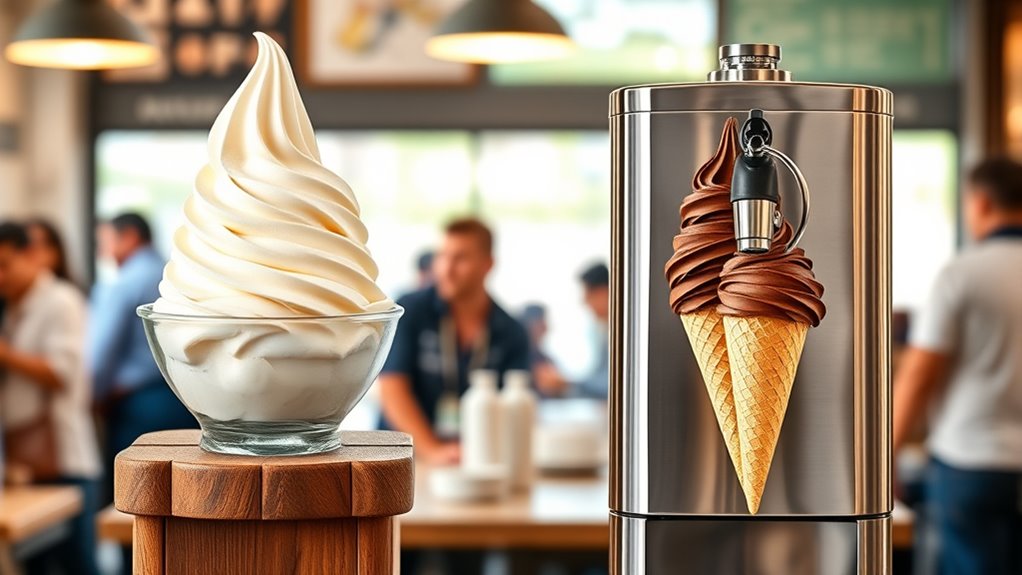
The type of soft serve machine you select can directly influence your sales volume and revenue potential. Gravity-fed machines often provide better flavor consistency, which keeps customers satisfied and encourages repeat business. Consistent flavor enhances your brand perception, making your shop known for quality. Additionally, water resistance features in some machines can minimize downtime and maintenance costs, further affecting your profitability. These features are especially important in environments prone to cybersecurity vulnerabilities, which can disrupt operations unexpectedly. Some models also incorporate advanced temperature control systems that help maintain optimal product quality throughout operation. Incorporating efficient maintenance practices can further reduce operational disruptions and extend machine lifespan. Moreover, implementing space-saving solutions can optimize your shop layout, allowing for more efficient customer flow and increased sales. Ultimately, choosing the right machine impacts your ability to attract and retain customers, affecting your revenue potential. Balancing flavor consistency with efficiency and brand image is key to maximizing profits and building a loyal customer base.
Frequently Asked Questions
Which System Is More Environmentally Friendly?
When considering which system is more environmentally friendly, you focus on factors like recycling potential and carbon footprint. You’ll find that pressurized systems often have a smaller carbon footprint because they use less energy and minimize waste. They also tend to have better recycling potential for parts and packaging, reducing environmental impact. Overall, pressurized soft serve machines generally offer a greener choice, helping you lower your business’s ecological footprint.
How Does Energy Consumption Compare Between Systems?
You might find that pressurized systems consume about 20% more energy than gravity-fed ones, mainly due to their pumps and compressors. This difference impacts energy efficiency and operational costs, making gravity-fed setups cheaper to run overall. If you’re aiming to minimize expenses, choosing a gravity-fed system could save you money on electricity while maintaining efficient ice cream dispensing. Keep energy consumption in mind when selecting your equipment to optimize your profits.
Can Both Systems Be Used for Other Frozen Desserts?
You can definitely use both systems for other frozen desserts, thanks to their equipment flexibility. Gravity-fed and pressurized setups offer great flavor versatility, letting you produce a variety of treats like gelato, frozen yogurt, or sorbet. This adaptability means you can expand your menu options and cater to different customer preferences, making both systems valuable assets for diversifying your offerings and boosting your business potential.
What Are the Space Requirements for Each Setup?
Ever wondered how much space you need for your soft serve setup? Both systems vary in storage capacity and installation complexity. Gravity-fed machines generally require less space and are simpler to install, making them suitable for smaller venues. Pressurized systems might need more room due to additional equipment but offer higher efficiency. So, does your space limit your choice, or can you expand to fit the best system for your business?
Are There Any Health or Safety Concerns Unique to Each System?
You should consider health risks and sanitation standards for each system. Gravity-fed setups may have fewer mechanical parts, reducing contamination points, but require diligent cleaning to prevent bacterial growth. Pressurized systems involve pumps and hoses that need regular maintenance to avoid cross-contamination. Both setups pose health risks if not properly sanitized, so adherence to strict sanitation standards is vital to guarantee customer safety and comply with health regulations.
Conclusion
Choosing between gravity-fed and pressurized soft serve systems can markedly impact your profits. Did you know that businesses using pressurized systems often see up to 20% higher sales due to faster service and better consistency? By understanding how each setup influences production, costs, and customer satisfaction, you can make smarter decisions to boost your revenue. Ultimately, selecting the right system aligns with your business goals, helping you serve more customers and maximize profit.
